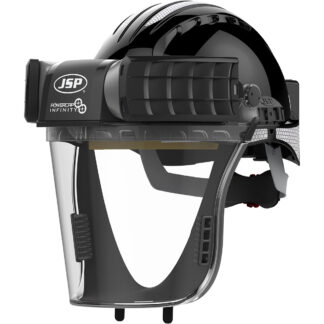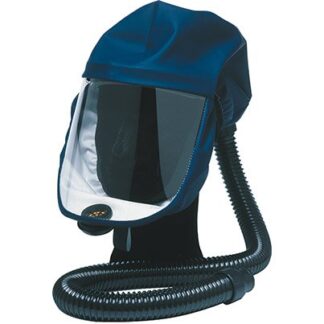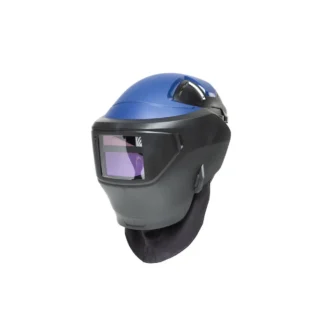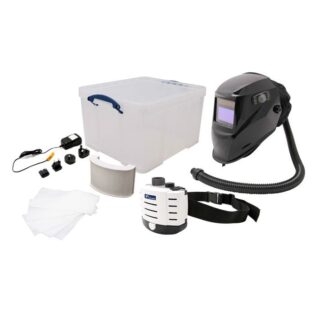Friends, tradesmen, lend me your ears! Choosing the right hearing protection for yourself and your employees might seem straightforward, but there are many factors to consider. Using the wrong hearing protection or neglecting to use any can lead to serious ear damage, including hearing loss. This is why it’s essential to do thorough research before selecting your hearing protection.
When should hearing protection be used?
The Control of Noise at Work Regulations 2005 stipulate that ear protection should be worn when exposed to noise levels greater than 85dB(A). This is the threshold our ears can tolerate before damage starts to occur. Frequent or prolonged exposure to such noise levels can cause conditions like tinnitus or permanent hearing loss.
To ensure proper protection, it’s crucial to measure the noise levels in your work environment. This can be done by conducting a full octave band sound analysis of the space. Matching your hearing protection to these noise levels is vital for effective safeguarding.
Types of hearing protection
To get started, below we have listed the four types of hearing protection available:
Disposable ear plugs
Disposable ear plugs fit into the ear canal to block out noise. They are small, discreet, and typically come in bright colours for visibility.
When should earplugs be replaced?
These should be replaced daily, as they can accumulate earwax and bacteria. Always keep a backup pair on hand as they are small and easy to lose when removed from the ear.
Ear defenders/earmuffs
Ear defenders cover the entire ear with a headband providing pressure to seal against the head, muffling sound as it enters the ear canal. This is why they are often called earmuffs, as they work by muffling the sound.
When should ear defenders be replaced?
Replace these when they show signs of wear, such as damaged ear cushions or a stretched headband. This is typically every 6-8 months under normal conditions or every 3-4 months in extreme climates.
Corded/banded earplugs
These earplugs are connected by a cord or band, making them easy to remove and keep accessible. They are soft and foam-based, conforming to the shape of the ear canal when inserted into the ear.
When should corded earplugs be replaced?
Replace these when the plugs are no longer pliable or show signs of wear and tear. If the band breaks, replace the entire set.
Helmet-mounted ear defenders/muffs
These ear defenders attach to protective helmets, making them ideal for workers who need to wear multiple types of protective clothing at once.
When should helmet-mounted earmuffs be replaced?
Similar to ear defenders/earmuffs, these should be replaced every 6-8 months of average wear and 3-4 months when they are used more heavily.
Laws for employers
Employers have a legal obligation to protect their employees from hearing damage. By law, employers must:
- Provide hearing protection if noise exposure is between the lower and upper exposure action values.
- Educate employees on how to use and care for hearing protection correctly. As well as when they need to be replaced.
- Mark with signs any areas where hearing protection is mandatory.
- Regularly check that hearing protection is being used and maintained properly.
How to use chosen protection effectively
There are several ways to make sure that hearing protection is being used as it should. Using them incorrectly could lead to hearing loss (temporary or permanent) so it is important to consider these tips while in use:
- Avoid cutting out too much noise, as this can prevent wearers from hearing important sounds in the workplace, potentially creating safety hazards.
- Ensure compatibility with other PPE like helmets, masks, and eye protection for a comfortable fit.
- Use hearing protection where mandated by law. Communicate to employees when and where protection is necessary.
- Ensure the level of protection matches the noise levels in the environment. Research before use to ensure adequate protection.
Recommended hearing protection
At Dust Masks Direct, we have over 40 years of experience supplying specialised PPE. Here are some of our top recommendations:
Moldex 7850 Spark Plug Earplug Station – 500 Pairs
Perfect for busy workplaces, these Moldex disposable earplugs are easily dispensed from a sealed and hygienic station. Their bright colours make it easy to check compliance and ensure workers are protected before using machinery.
JSP Sonis 3 Helmet Mounted Ear Defender 36dB
JSP Sonis 3 helmet-mounted ear defenders are ideal for harsh, noisy environments, these defenders clip onto various headgear for simple protection. With an SNR 36 rating, they provide strong protection in extremely high-noise environments.
Moldex M4 Ear Defenders – 6110
Designed for comfort, the Moldex M4 ear defenders are the lightest in the Moldex M series range. The comfort cushions are made from viscoelastic foam and have ribbed air cushions. They come at an affordable price and only need to be replaced every 6 months.
Explore these and other hearing protection products on our website. If you have any questions about which ear defenders are best for your needs, please call us on 01842 765634. We’re happy to help you find the perfect solution.




